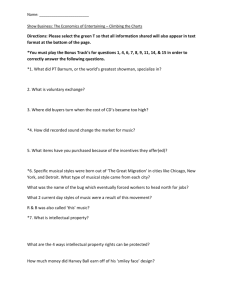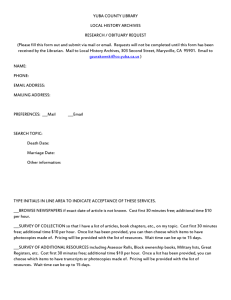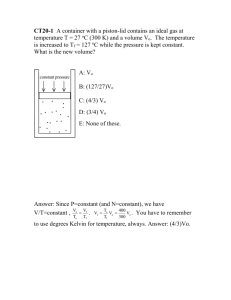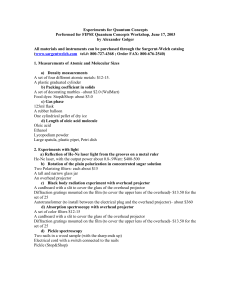Module 14 Class Exercises
advertisement
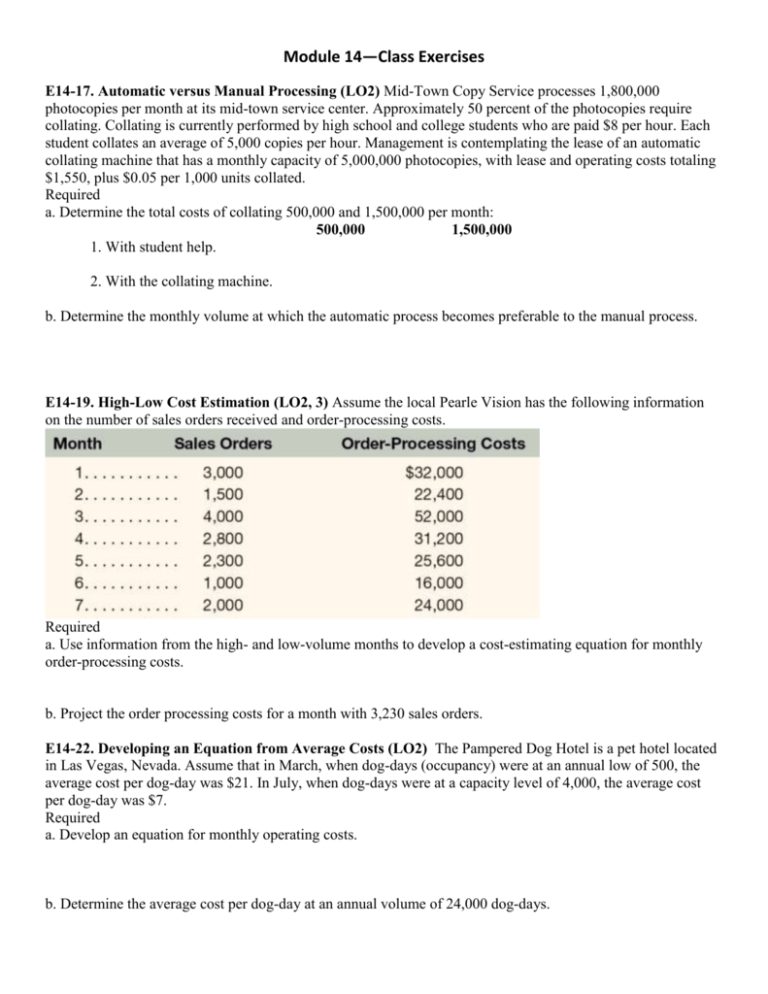
Module 14—Class Exercises E14-17. Automatic versus Manual Processing (LO2) Mid-Town Copy Service processes 1,800,000 photocopies per month at its mid-town service center. Approximately 50 percent of the photocopies require collating. Collating is currently performed by high school and college students who are paid $8 per hour. Each student collates an average of 5,000 copies per hour. Management is contemplating the lease of an automatic collating machine that has a monthly capacity of 5,000,000 photocopies, with lease and operating costs totaling $1,550, plus $0.05 per 1,000 units collated. Required a. Determine the total costs of collating 500,000 and 1,500,000 per month: 500,000 1,500,000 1. With student help. 2. With the collating machine. b. Determine the monthly volume at which the automatic process becomes preferable to the manual process. E14-19. High-Low Cost Estimation (LO2, 3) Assume the local Pearle Vision has the following information on the number of sales orders received and order-processing costs. Required a. Use information from the high- and low-volume months to develop a cost-estimating equation for monthly order-processing costs. b. Project the order processing costs for a month with 3,230 sales orders. E14-22. Developing an Equation from Average Costs (LO2) The Pampered Dog Hotel is a pet hotel located in Las Vegas, Nevada. Assume that in March, when dog-days (occupancy) were at an annual low of 500, the average cost per dog-day was $21. In July, when dog-days were at a capacity level of 4,000, the average cost per dog-day was $7. Required a. Develop an equation for monthly operating costs. b. Determine the average cost per dog-day at an annual volume of 24,000 dog-days. P14-26. Multiple Cost Drivers (LO4) Scottsdale Ltd. manufactures a variety of high-volume and low-volume products to customer demand. Presented is information on 2011 manufacturing overhead and activity cost drivers. Total Cost = $800,000 Product X1 required 2,000 machine hours to fill 10 customer orders for a total of 8,000 units. Required: a. Assuming all manufacturing overhead is estimated and predicted on the basis of machine hours, determine the predicted total overhead costs to produce the 8,000 units of product X1. Cost per machine hour = __________ Cost for 8,000 units = ___________ b. Assuming manufacturing overhead is estimated and predicted using separate rates for machine hours, customer orders, and products (a multiple-level cost hierarchy), determine the predicted total overhead costs to produce the 8,000 units of product X1. Rate Quantity Cost Allocated Machine hours Batches Product



